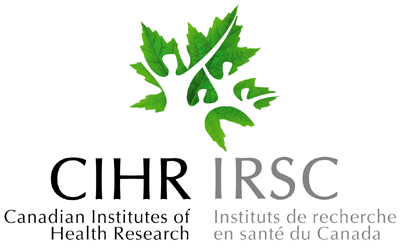The Canadian Association of Psoriasis Patients is pleased to announce the winners of the 2021 studentships in psoriatic disease. Congratulations to all of you!
Arvin Ighani, University of Toronto
Supervisor: Dr. Jensen Yeung
Project Title: Does phototherapy for the treatment of psoriasis warrant further government funding in Canada? An evaluation of the efficacy, safety, and impact on quality of life of narrowband ultraviolet-B phototherapy to support evidence-based health care policies
Summary
Psoriasis is a skin condition which is thought to affect approximately 125 million people worldwide. Many of these individuals have moderate-to-severe psoriasis that requires treatment beyond first-line topical management. Although many effective oral and injectable therapies exist for its management, they can be associated with severe side-effects, large financial burden, inconvenient monitoring, and uncomfortable routes of delivery. Given these setbacks, physicians would ideally first consider NB-UVB phototherapy as a treatment option in suitable candidates before recommending systemic or biologic therapies because of its excellent safety profile and potentially successful clinical reduction of psoriasis. However, the lack of accessibility to phototherapy centers and long wait times for treatment often impede patients from seeking this therapy. The issues surrounding accessibility for phototherapy are partly driven by the lack of physician compensation for prescribing these treatments and the unmet need for increased government funding to maintain phototherapy centers. Currently, there are few high-quality research studies that clearly demonstrate the efficacy and impact on quality of life of NB-UVB phototherapy for psoriasis patients in the context of specific dosing regimens with qualified nursing staff that use optimal dosing regimens to achieve successful psoriasis clearance. The goal of our research is to conduct a high-quality prospective study that clearly demonstrates the efficacy, safety, and impact on quality of life of NB-UVB phototherapy. This data can then be used to guide government policymaking and potentially be used to justify increased funding for phototherapy centers across the country, leading to greater patient accessibility, optimal dosing regimens for patients, and ultimately better clearance of psoriasis with minimal side effects for patients who have been unsuccessful with other treatments.
Ryan Lewinson, University of Calgary
Supervisor: Dr. Cheryl Barnabe
Title: Biomechanics in the Pathogenesis of Psoriatic Arthritis
Lay Summary
Psoriasis is an inflammatory skin disease where patients develop itchy scaling skin plaques. Psoriasis skin lesions are thought to sometimes form due to mechanical stress applied to the skin, a process called the “Koebner-phenomenon,” named after the German dermatologist Heinrich Koebner who discovered the process. In other words, if a person has psoriasis, new lesions can form on previously normal skin when it is traumatized by mechanical stress. This process is not well understood, but appears to be related to inflammatory signaling in the skin.
Interestingly, there has recently been a proposed “deep-Koebner” phenomenon as well that affects joints rather than skin. This process may be important for patients with psoriatic arthritis (PsA) – a condition where the patient has skin psoriasis and also painful, destructive inflammation to joints and tendons. The deep-Koebner phenomenon is proposed to also occur in response to mechanical stimuli, where a joint exposed to abnormal mechanical loading may be susceptible to then developing joint inflammation in PsA.
There has been very little research on the topic of the deep-Koebner phenomenon in PsA, but clarifying this process could hold important clues in understanding the pathogenesis of PsA and potentially reveal new treatment targets and disease prevention strategies. Our aims in this project are to conduct a review of the literature to identify all documented laboratory and clinical studies assessing the role of biomechanics in the development of PsA, which includes human data, as well as data from tissue and animal modelling experiments. In so doing, we hope to identify the current knowledge gaps in understanding the deep-Koebner phenomenon and propose new hypotheses for focused study in the future. This study will provide an overview of what is already known about the deep-Koebner phenomenon, as well as provide an important first step in identifying future directions in basic science, engineering and clinical research for PsA.
Daniel Pau, Toronto Western University
Supervisor: Dr. Dafna Gladman
Title: Can lower back x-rays be used to prognosticate psoriatic arthritis (PsA) in psoriasis patients?
Summary
Psoriasis is a chronic inflammatory skin disease affecting 0.5 to 11.4 percent of adults worldwide. There is an increasing understanding of systemic comorbid conditions in patients with psoriasis. Diseases reported to occur at a higher frequency include cardiovascular disease, hypertension, diabetes, and autoimmune disorders. Between 30 to 40 percent of psoriasis cases will develop psoriatic arthritis (PsA). PsA impacts the quality of life, work function, and increases mortality risk due to the strong association with many other diseases. There is a growing need to begin earlier diagnosis of PsA to prevent these downstream effects. Although back disease is recognized as a domain of PsA, patients with PsA do not complain of a lot of pain and the only way to detect the presence of back disease is by radiographs. We have previously found that the modified Stokes Ankylosing Spondylitis Score is most sensitive to change in PsA. We now plan to complete reading of radiographs of PsA patients in our clinic, determine whether the presence of degenerative disc disease affects the scores, and discern whether anti-TNF agents reduce radiographic progression of spine disease as they do for peripheral joint disease.
Priya Dhir, Toronto Western University
Supervisor: Dr. Dafna Gladman
Title: Biomarkers to Predict Psoriatic Arthritis
Summary
Psoriasis is a common immune-mediated skin condition affecting 2-3% of the population. Almost a third of individuals with psoriasis develop psoriatic arthritis (PsA), a chronic inflammation of assorted joints throughout the body. The severity of the disease varies but is often associated with disability, decreased quality of life, and increased mortality risk. Studies indicate that 30-40% of patients with psoriasis have undiagnosed PsA. The lack of a definitive laboratory test for PsA may contribute to this statistic. Presently, rheumatologists mainly rely on clinical assessment and radiographic techniques to diagnose PsA. These tests detect the disease after joint damage has already taken place. Our project aims to find reliable biomarkers that can help in early detection of PsA. This study will help understand the source of these differences in the blood of PsA patients in order to strengthen their utility as markers of PsA. Early detection allows early treatment, which is promising for prevention of joint damage and improving quality of life for patients. Furthermore, the project will help shed light on the pathophysiology of PsA.
Ahmed Mourad, University of Alberta
Supervisor: Dr. Robert Gniadecki
Project Title: How can we improve treatment outcomes in psoriasis? A systematic review and metaanalysis of biologic drug survival in psoriasis.
Summary
Psoriasis is a chronic skin condition that has a profound negative impact on patient wellbeing and quality of life. Psoriasis is often difficult to treat, especially when it involves the majority of the body. Biologic medication has been shown to be very helpful in treating psoriasis because they interfere with the body’s immune system to decrease the cytokines (cell messengers) that are involved in psoriasis. There are multiple biologics currently approved to treat psoriasis. These biologics show varying degrees of effect according to the scientific studies, but no study to date has summarized the data in a way useful for clinicians to use. Once patients discontinue their biologic medication, their psoriasis recurs. It is therefore important for patients to remain on their biologic therapy for as long as they can safely tolerate it. Drug survival is defined as the time until discontinuation of a drug. It is a real-world substitute measure of effectiveness, safety, and improved disease control for patients with psoriasis. Biologics with better drug survivals are more effective and have better safety profiles. The purpose of this study is to summarize the current literature on the drug survival of the different biologic therapies used in psoriasis and create a numerical pooled result through a meta-analysis (statistical analysis of the currently available studies). The studied biologics will be compared against each other by calculating a summarized statistical measure called a hazard ratio. It is hypothesized that we will identify certain biologics that consistently have longer drug survivals among the various studies. This study will be a powerful resource for clinicians to refer to when making treatment decisions for their patients with psoriasis.
CAPP is so grateful for the support of our 2018 sponsors, without whom these Studentships would not be possible.









